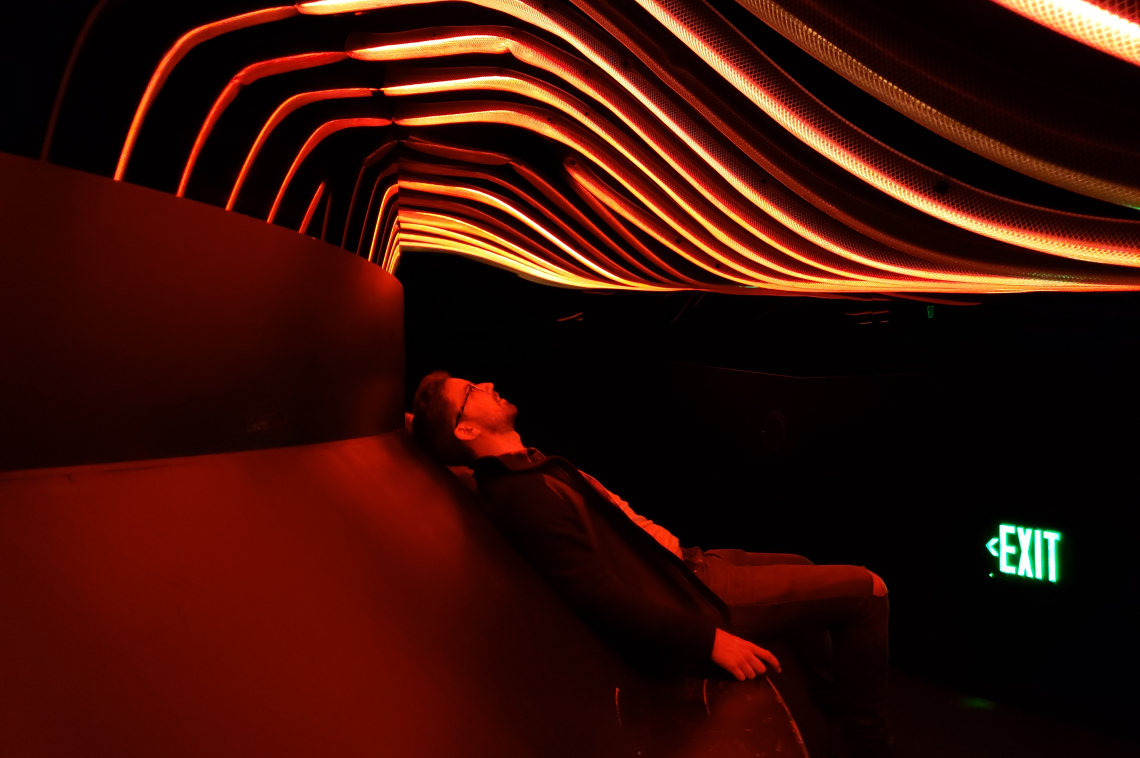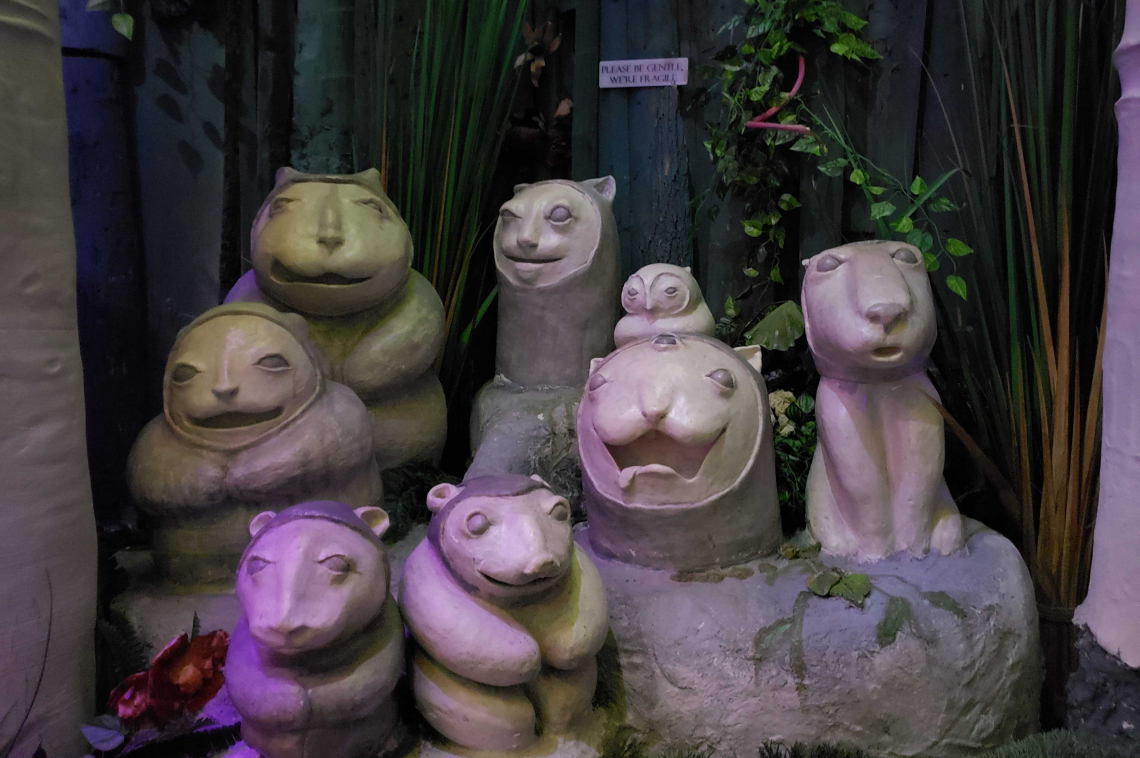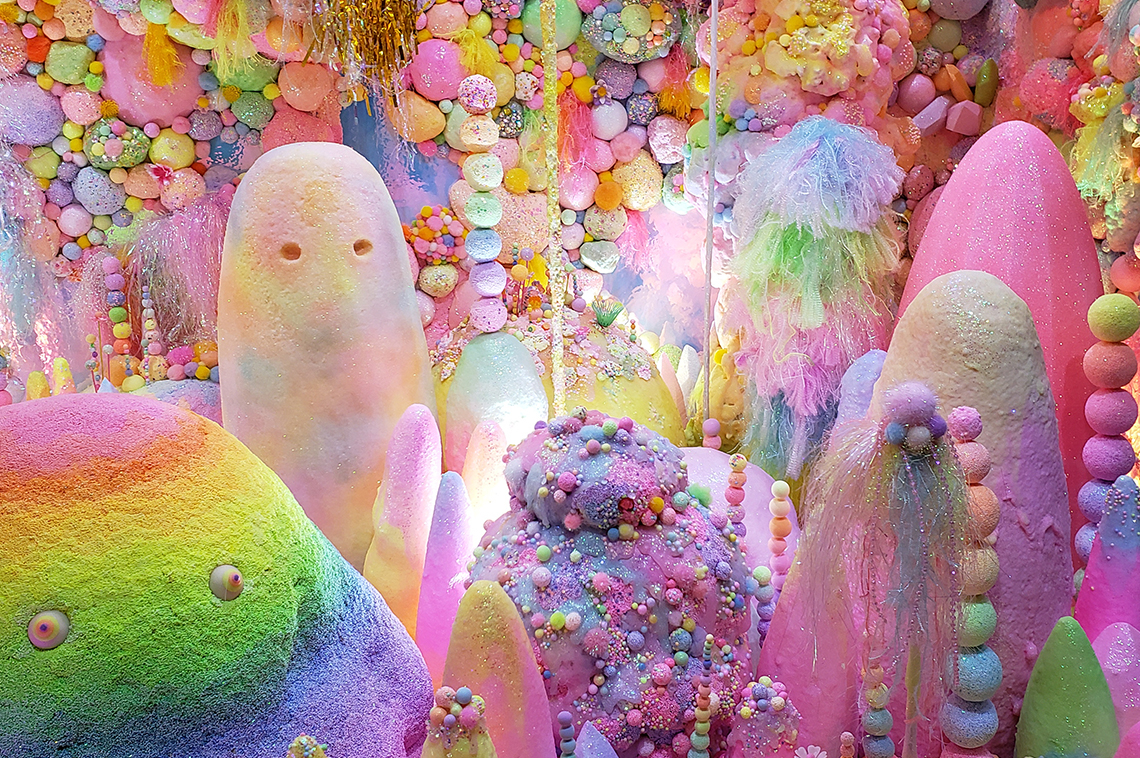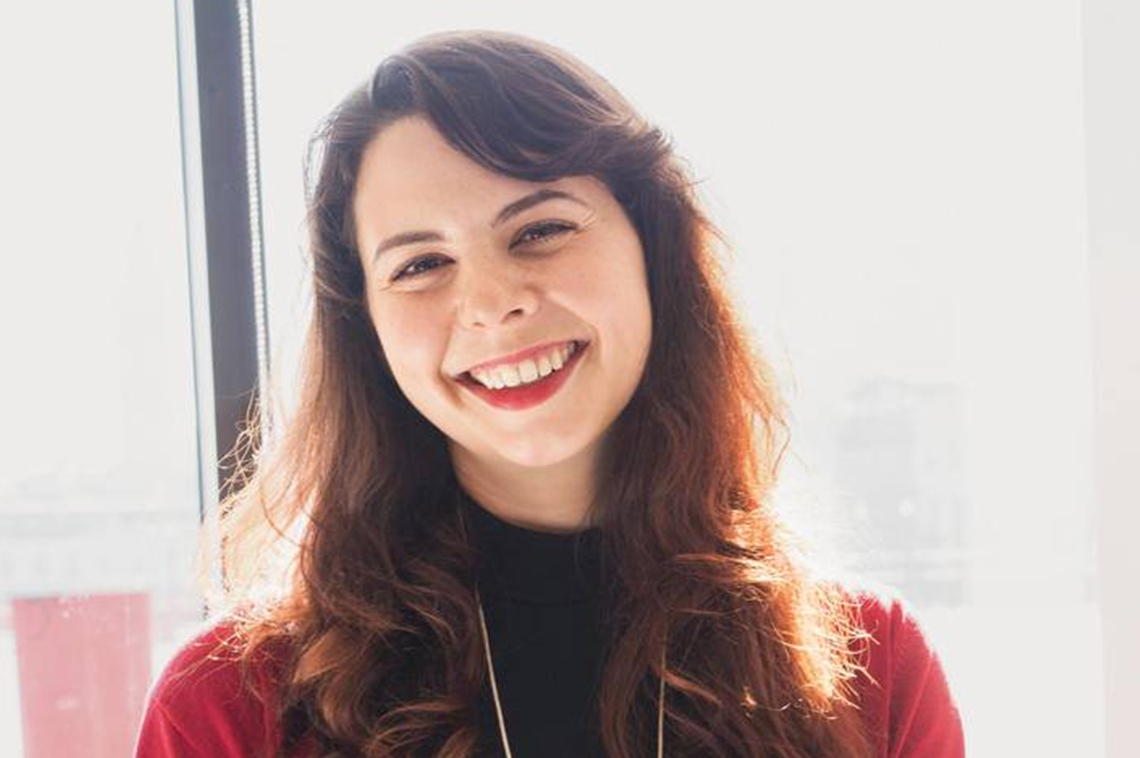



“I did not believe that a cause which stood for a beautiful ideal...should demand denial of life and joy.” —Emma Goldman
The National Consortium for Creative Placemaking’s CPL Summits are always fun, but sometimes their events completely blur the lines between learning, work, and play. That was definitely the case this past February at CPLS West in Albuquerque, during the Friday morning plenary “Play in Public with Meow Wolf.”
Sarah Brin, Strategic Partnerships Manager for the “immersive art experiences” organization, got the 9:00 am session off to an energetic start with a physical game requiring audience participation, then augmented her video-packed slide presentation with a fascinating and animated treatise on play: what it means, how we do it, and why it matters.
Here are some of our top takeaways:
Play ≠ Games
To many people, games have a start and a stop. They have rules, winners, and losers. Games are for kids or for nerds. Games are synonymous with play.
While Brin said that none of these stereotypes are invariably true, the last is especially false. Invoking the play scholar Miguel Sicart, she said play is a perspective, an approach, a way of living in the world. Play is part of being human; it’s a way we engage with others and understand our surroundings. Play doesn’t have to be an escape; it can be a facet of our reality.
Joy is Inseparable from Revolution
Resistance lends itself to playfulness. Say you’re working to disrupt an organization’s or a society’s rules. Taking a playful perspective to your mandate would involve creatively pushing up against and reappropriating their norms.
If we follow the logic of the Emma Goldman quote above, we would conclude that the desire for a better future is inseparable from joy. Therefore, joy is an essential part of our shaking and shifting toward revolution.
Brin posited that part of the reason the video of Alexandria Ocasio-Cortez dancing in college was seized upon so tightly by her adversaries was that seeing her play was too exciting and galvanizing for the public. Joy became another of her attributes (along with being young, female, and a person of color) that threatened the conventional idea of what an elected official can and should be. When we have evidence that the status quo is less reliable or less constraining than we had thought, it opens the door for imagining new ways of doing and being. This threatens conservative standards.
Artists Play for Change
There is a long and rich history of artists using play to communicate their convictions and foment change, often in public spaces. During the AIDS crisis of the 1980s and ’90s, ACT UP organized numerous “kiss-ins” and “die-ins” to draw attention to their cause. Brin said that while these theatrical protests weren’t “play” in the sense that they brought levity to the situation, they were staged very tactically, creatively, and purposefully: in public spaces, and with great visual impact to appeal to media.
The Yes Men share ACT UP’s media savvy and appetite for change, said Brin. By using communication formats like press conferences and newspaper headlines to broadcast their message of “the corporate takeover of society,” the duo succeeds in playfully reappropriating the traditional to serve their vision of the future.
Not Everyone Gets to Play
Brin acknowledged that while opportunities for play, especially in public spaces, are exciting, it’s also important to understand that not everyone gets to play. Not everyone is free to use public spaces safely and creatively. Her presentation scrolled through a heart-wrenching, and sadly very partial, list of adolescents killed in public spaces by police: Tamir Rice, Trayvon Martin, and Antwon Rose, Jr.
“How do we reconcile these things?” Brin asked. “I don’t know, but I do know that we don’t figure that out in isolation.” She described the live game &maybetheywontkillyou, created by game designer and Iraq war veteran Akira Thompson, in which the player must endeavor to run an errand to a nearby grocery store and get home alive—while being a young, poor, Black man. Thompson’s use of a structured system like a game to investigate the way racism works in the United States highlights the fact that racism itself also has a structure and rules (spoken or unspoken) that govern its perpetuation.
“There aren’t really winners or losers in this game,” Brin explained. “It just illustrates a system that is inherently unfair. It’s the mapping of one person’s experience onto another’s. It reappropriates the painful and devastating in a way that people who aren’t young Black men can embody, for a few moments.”
Playing Toward Revolution
In conclusion, Brin reiterated that play can help us to envision a more just future and a more fair game.
Of her daily work with Meow Wolf, she said, “If you look at traditional ways of seeing and interacting with art, they can be perceived as rigid, clandestine. Many museums telegraph ‘right’ and ‘wrong’ ways to interpret art, but Meow Wolf uses a playful perspective to engage with art. My hope is that people can have art experiences at places like this and realize that ‘the arts’ are much more fungible and flexible than they may previously have thought—and that that can extend beyond the arts into systems like race, class, and gender that we also might have thought to be more rigid.”





